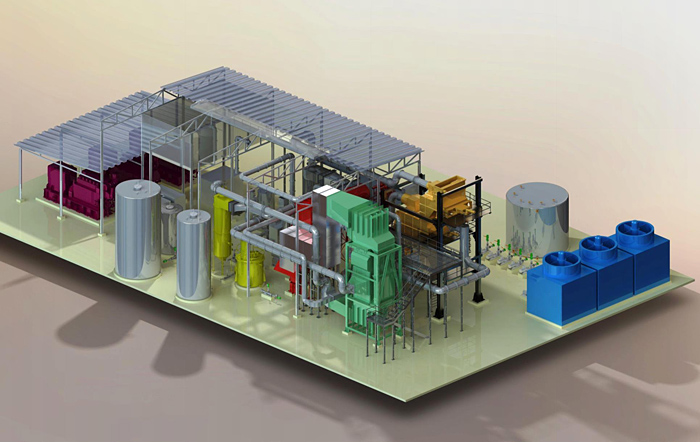- Gasification
- Plasma Gasification
- Pyrolysis
Home / Gasification Technology / Plasma Gasification
Plasma Gasification -
Waste To Energy - WTE
 Plasma is the fourth state of nature, by far the most common form of matter. Plasma in the stars and in the tenuous space between them makes up over 99% of the visible universe and perhaps most of that which is not visible.
Plasma is the fourth state of nature, by far the most common form of matter. Plasma in the stars and in the tenuous space between them makes up over 99% of the visible universe and perhaps most of that which is not visible.
In Plasma, the temperatures and densities range from relatively cool and tenuous to very hot and dense (like the central core of a star). Ordinary solids, liquids, and gases are both electrically neutral and too cool or dense to be in a plasma state. Plasma consists of a collection of free-moving electrons and ions - atoms that have lost electrons. Energy is needed to strip electrons from atoms to make plasma. The energy can be of various origins: thermal, electrical, or light (ultraviolet light or intense visible light from a laser). With insufficient sustaining power, plasmas recombine into neutral gas.
In physics and chemistry, plasma is a state of matter similar to gas in which a certain portion of the particles are ionized. The basic premise is that heating a gas dissociates its molecular bonds, rendering it into its constituent atoms. Further heating leads to ionization (a loss of electrons), turning it into a plasma: containing charged particles, positive ions and negative electrons.
The basics of plasma technology are straightforward. A high-voltage current is passed between two electrodes to create a high-intensity arc, which in turn rips electrons from the air and converts the gas into plasma or a field of, intense and radiant energy.
This is the process behind fluorescent and neon lighting where low voltage electricity passing between electrodes in a sealed glass tube containing an inert gas excites the electrons in the gas and the gas releases radiant energy. Another example is an electric arc welding or cutting; the electricity passing between electrodes creates an arc and transform the air around into plasma that can melt metal.
Plasma Gasification Process
First, waste is fed into an auger, a machine which shreds it into smaller pieces. These are then fed into a plasma chamber – a sealed, stainless steel vessel filled with either nitrogen or another inert gas. A high voltage electrical current is passed between two electrodes; this rips electrons from the air and creates plasma.

A constant flow of electricity through the plasma maintains a field of extremely intense energy powerful enough to disintegrate the shredded waste into its component elements. The byproducts are a glass-like substance used as raw materials for high-strength asphalt or household tiles and "syngas".
Syngas is a mixture of hydrogen and carbon monoxide and it can be converted into fuels such as hydrogen, natural gas, jet Fuel, Diesel, ethanol or burn in a Gas turbine generator to produce electricity. Syngas (which leaves the converter at a temperature of around 2,200 degrees Fahrenheit) is fed into a cooling system which generates high pressure steam. This steam is used to drive turbines which produce electricity – part of which is used to power the converter, while the rest can be used for the plant's heating or electrical needs, or sold back to the utility grid.
Therefore, aside from the initial power supply from the community's electrical grid, the whole machine can produce the electricity it needs for operations. It also produces materials that can be sold for commercial use so, at some point, the plasma gasification system will generate profit for its users.
The benefits of plasma gasification are evident. It is self-sustaining after the initial electrical charge is used; it is environmentally friendly; and it produces materials that have commercial applications or use and thus can generate profit.
Aside from disposing of newly-produced waste, the system can also be used to dispose of accumulated landfill waste so land reclamation is entirely possible. Another application planned is using the syngas as a base for producing hydrogen in commercial quantities, which will be used as fuel for hydrogen-powered vehicles.